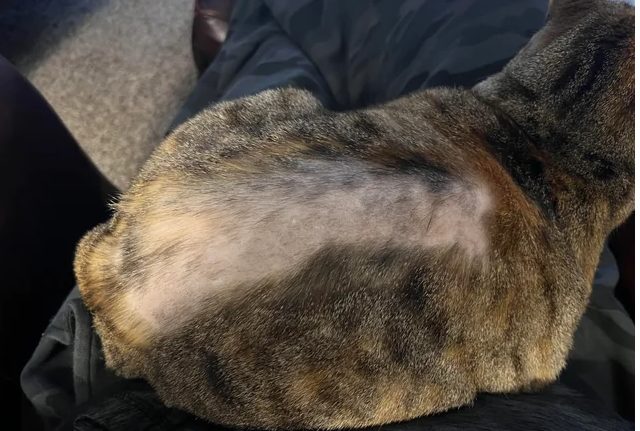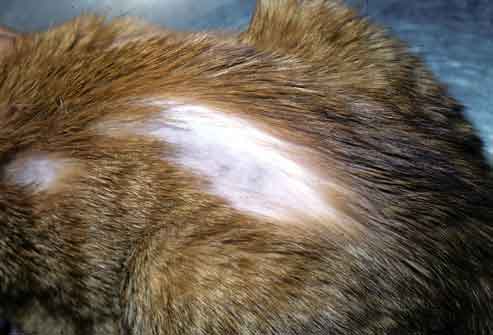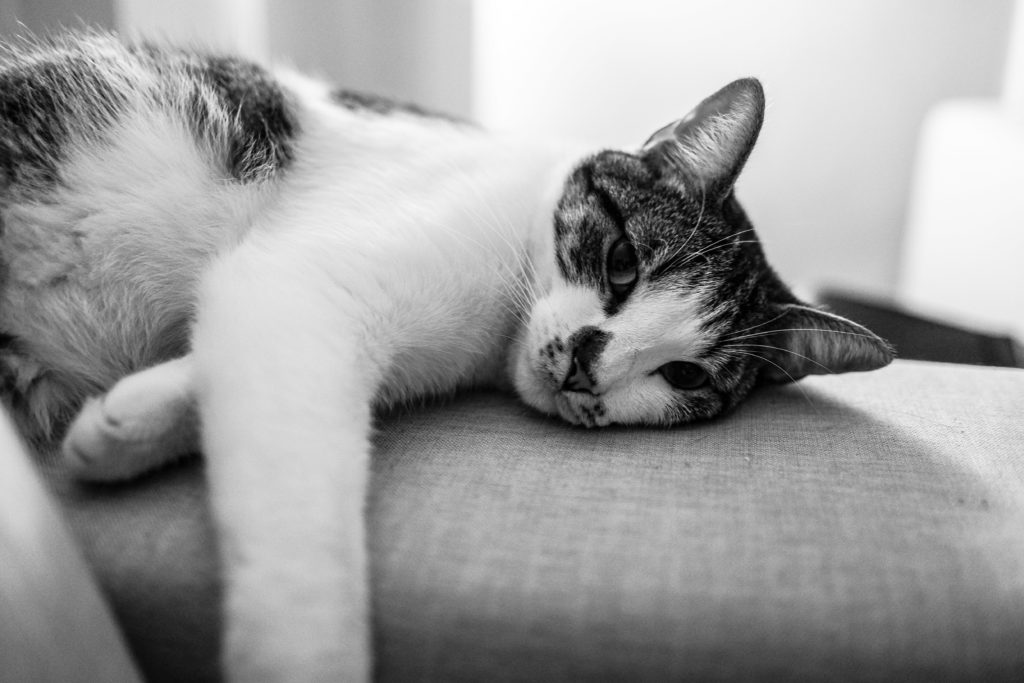Cat losing hair, or alopecia, is a common problem that affects many cats and their owners. Have you ever noticed your cat shedding more than usual? Or you’ve seen bald spots or patches on their fur. If so, you might wonder what’s causing your cat’s hair loss and what you can do about it. It can have various causes, some more serious than others.
After researching and drawing from my personal experiences, I will explain the causes of cat hair loss, how to recognize them, and what steps to take.
Why Is My Cat Losing Hair?
Let’s look at the big picture before diving into the specific questions and concerns about cat hair loss. What are the possible causes of hair loss in cats, and how can you tell them apart?
Hair loss in cats can have many different causes, some more serious than others. Knowing the possible causes can help you find the best treatment and care for your cat.
Here are some of the most common causes of cat hair loss:
- Parasites: Fleas, mites, or ringworms can cause itching, inflammation, and hair loss. You may see redness, scabs, or flakes on your cat’s skin or notice them scratching or biting themselves. You may also see the parasites or their eggs on your cat’s fur or bedding.
- Skin Allergies: Your cat may be allergic to something in their food or environment, such as pollen, dust, or certain proteins. This can cause itching, swelling, and hair loss. You may see your cat licking or chewing their fur or notice bald patches or rashes on their skin.
- Stress Factors: Your cat may feel anxious or stressed by changes in their routine, new pets, or other factors, and groom themselves excessively. This can cause hair loss, especially in areas that are easy to reach, such as the belly, legs, or back. You may see your cat grooming more than usual or notice signs of stress, such as hiding, aggression, or litter box problems.
- Nutritional Deficiencies: Your cat may not get enough vitamins, minerals, or fatty acids in their diet, which can affect their skin and coat health. This can cause dryness, brittleness, and hair loss. You may see your cat’s fur looking dull, thin, or coarse or notice changes in appetite or weight.
- Thyroid Issues: Hyperthyroidism is a condition where the thyroid gland produces too much thyroid hormone, which can cause weight loss, increased appetite, and hair loss. You may see your cat eating more but losing weight or notice their fur looking patchy, greasy, or matted.
- Other Medical Conditions: Diabetes, infections, or autoimmune diseases can also cause hair loss, along with other symptoms. You may see your cat drinking, urinating, fever, lethargy, or pain.
If you notice any of these signs or symptoms in your cat, consult your veterinarian as soon as possible. They can examine your cat, run tests, and prescribe the right treatment. You can also find helpful information and support from reputable veterinary websites or forums.
Why Is My Cat Losing Hair on Her Back?

Now that we’ve covered the general causes of cat hair loss let’s focus on some specific questions and concerns.
One of the most common questions cat owners ask is: Why is my cat losing hair on her back? Hair loss on the back can have different causes than hair loss on other parts of the body.
It’s important to pay attention to where your cat is losing hair and why. Here are some of the possible reasons for hair loss on the back:
- Friction: Your cat may rub their back against furniture or scratch it too much, causing hair breakage or loss. This can happen if your cat has fleas, mites, allergies, or your skin is dry or irritated. You may see bald spots or thinning hair on their back or notice them rubbing or scratching themselves more often.
- Stress-related Licking: Your cat may lick their back compulsively to cope with stress or anxiety, resulting in hair loss. This can happen if your cat is stressed by environmental changes, such as moving, traveling, or introducing new pets. You may see your cat grooming more than usual or notice bald patches or rashes on their back.
- Medical Conditions: Your cat may have a skin infection, a tumor, or nerve damage that affects their back, causing hair loss or other symptoms. This can happen if your cat has a bacterial, fungal, or viral infection, such as ringworm, or growth, such as a cyst or a cancerous tumor. You may see redness, swelling, or discharge on their back or notice them showing signs of pain or discomfort.
The only way to know what’s causing your cat’s hair loss on their back is to see your veterinarian. They can examine your cat, diagnose the problem, and recommend the best treatment. Please don’t rely on guesswork or home remedies; they may not work or worsen things.
Why Is My Cat Losing Hair on Her Belly and Legs?
If you notice your cat losing hair on her belly and legs, you might wonder what is causing it and how to treat it. The good news is that hair loss in these areas is often less severe and might be attributed to common factors such as:
- Grooming Habits: Cats are meticulous groomers, and sometimes, they might over-groom themselves due to allergies or stress. This can result in hair loss on the belly and legs, which they can easily reach with their tongue. To prevent this, you can identify and eliminate the source of the allergy or stress and provide your cat with more enrichment and stimulation.
- Contact Dermatitis: This is a skin reaction to something your cat encounters, such as laundry detergents, carpet cleaners, or other irritants. It can cause itching, redness, and hair loss on the belly and legs, where the skin is more sensitive. To avoid this, you can use hypoallergenic or fragrance-free products and wash your cat’s bedding regularly.
- Seasonal Shedding: Cats shed their fur according to the changes in daylight and temperature. During shedding phases, they might lose more hair than usual, especially on the belly and legs, where the fur is thinner. This is normal and requires no treatment except regular brushing to remove the loose hair and prevent mats and tangles.
- Additional Factors: There might be other causes of hair loss on the belly and legs, such as fleas, mites, ringworms, or underlying medical issues. These can be more serious and require veterinary attention, especially if the hair loss is accompanied by other symptoms such as scratching, licking, biting, scabs, sores, or weight loss.
Why Is My Cat Losing Patches of Hair?
If your cat is experiencing hair loss, the shape and location of the hair loss can provide important clues about the possible causes. You and your veterinarian can work together to determine the best course of action by understanding the various hair loss patterns and their implications. Some common hair loss patterns and their implications include:
1. Patchy Hair Loss:

This is when your cat loses hair in small or large patches, leaving bald spots on the skin. Various factors, such as fungal infections, bacterial infections, allergic reactions, or immune-mediated disorders, can cause this.
These can cause inflammation, irritation, or damage to the hair follicles, resulting in hair loss. Patchy hair loss can also be caused by self-inflicted trauma, such as excessive licking, scratching, or biting, due to stress, boredom, or anxiety.
2. Distinct Shapes:
Sometimes, the hair loss can have a distinct shape, such as circular, oval, or linear.
This can indicate a specific cause, such as ringworm, a fungal infection that causes circular patches of hair loss, often with a red ring around it.
Another example is stud tail, which is a condition that affects male cats and causes hair loss and greasiness at the base of the tail, forming a linear pattern.
These shapes can help your vet identify the cause and prescribe the appropriate treatment.
Conclusion
Cat hair loss can have many causes, ranging from benign to serious. While some cases might be normal or harmless, others can indicate significant health issues that must be addressed. Seeking prompt veterinary care is vital for accurate diagnosis and effective treatment, ensuring your feline companion’s well-being.
Understanding the common causes and solutions for cat hair loss can help your cat maintain a healthy and beautiful coat. I hope this article has provided some basic information on why cats lose their hair. If you have any suggestions or comments, please write to us.
References:
- petmd: Cat Skin Allergies | https://www.petmd.com/cat/conditions/skin/cat-skin-allergies
- VCA Voice: Ringworm in Cats | https://vcahospitals.com/know-your-pet/ringworm-in-cats
- Merck Manual Veterinary Manual: Disorders of the Thyroid Gland in Cats | https://www.merckvetmanual.com/cat-owners/hormonal-disorders-of-cats/disorders-of-the-thyroid-gland-in-cats
With a passion for cats and years of experience in cat care and grooming, I have gained valuable insights and expertise that I want to share with other cat lovers. I believe that every cat deserves the best care possible, and through this platform, I aim to empower cat owners like you to provide the utmost love and care for your feline companions.



